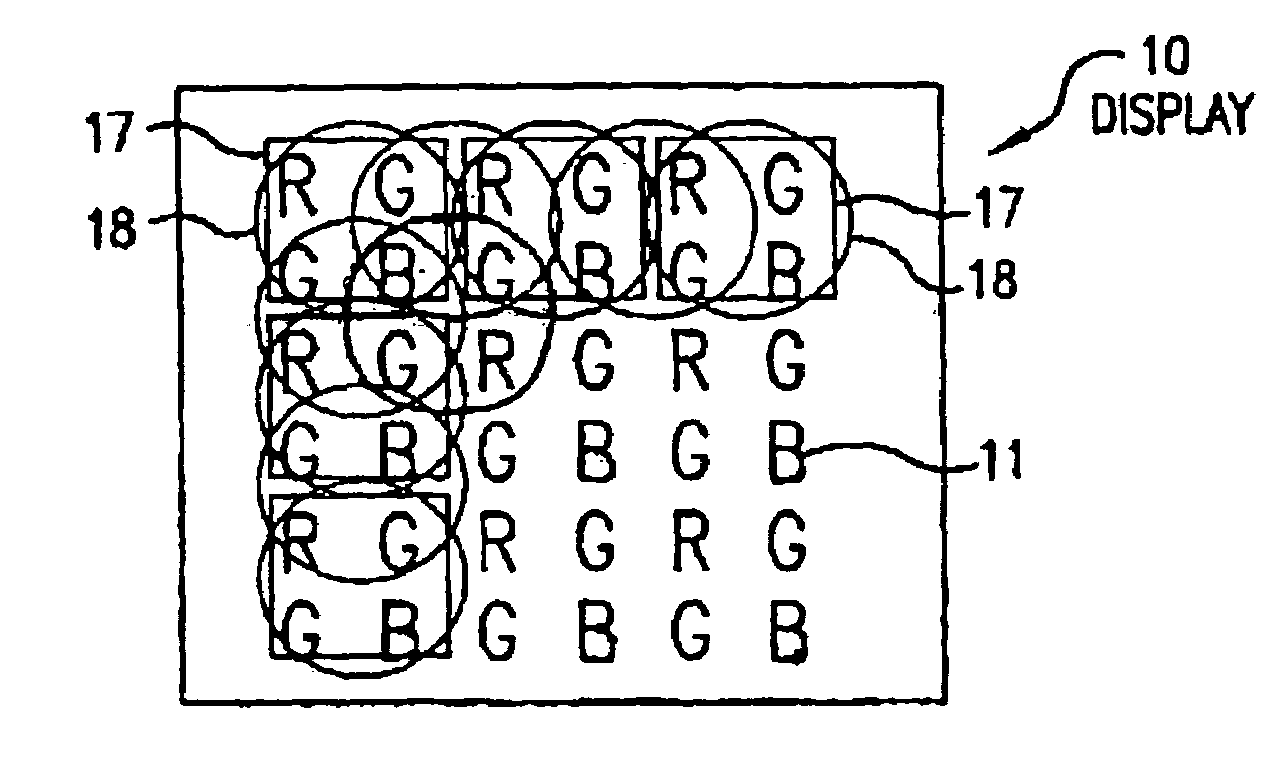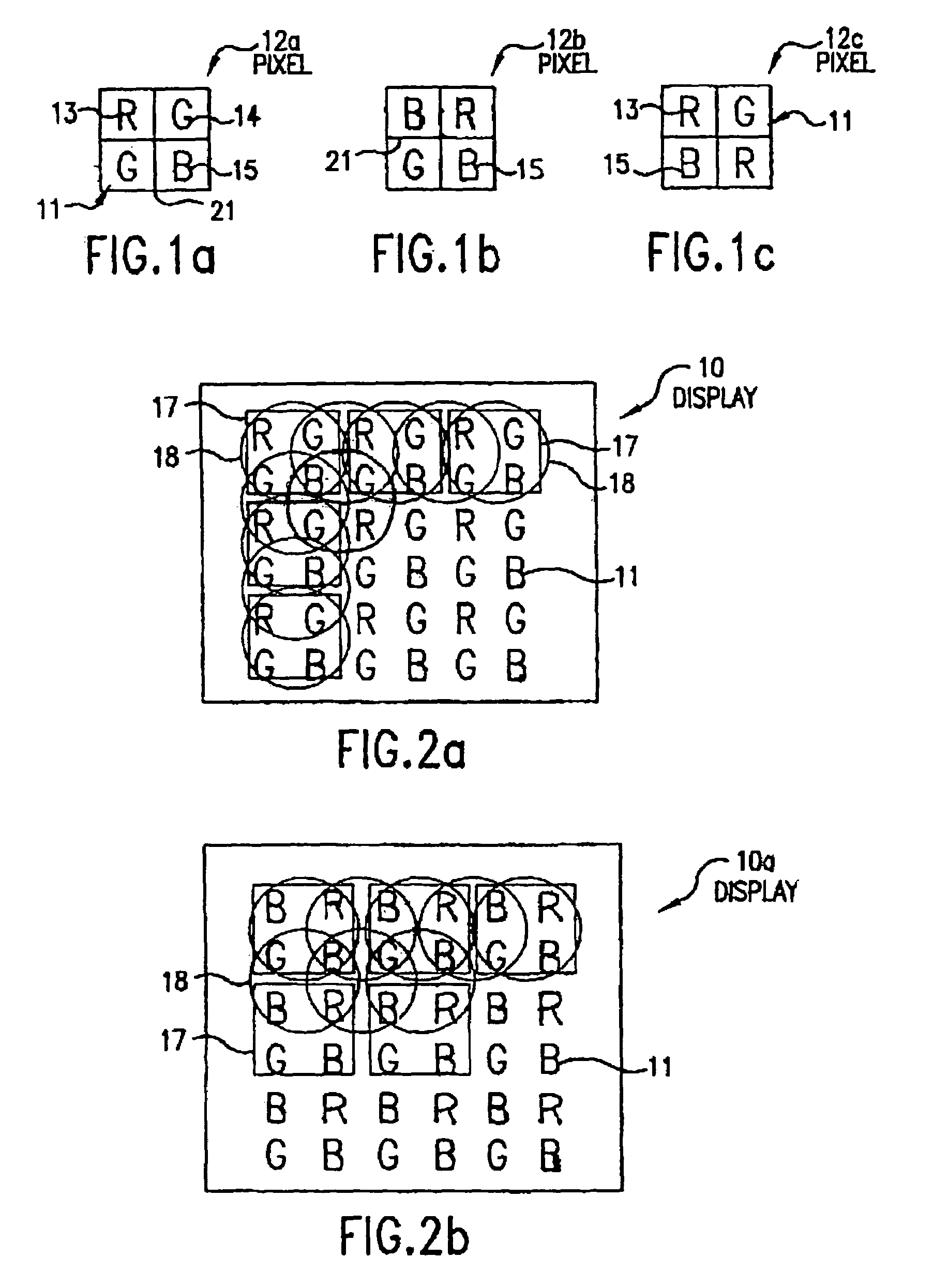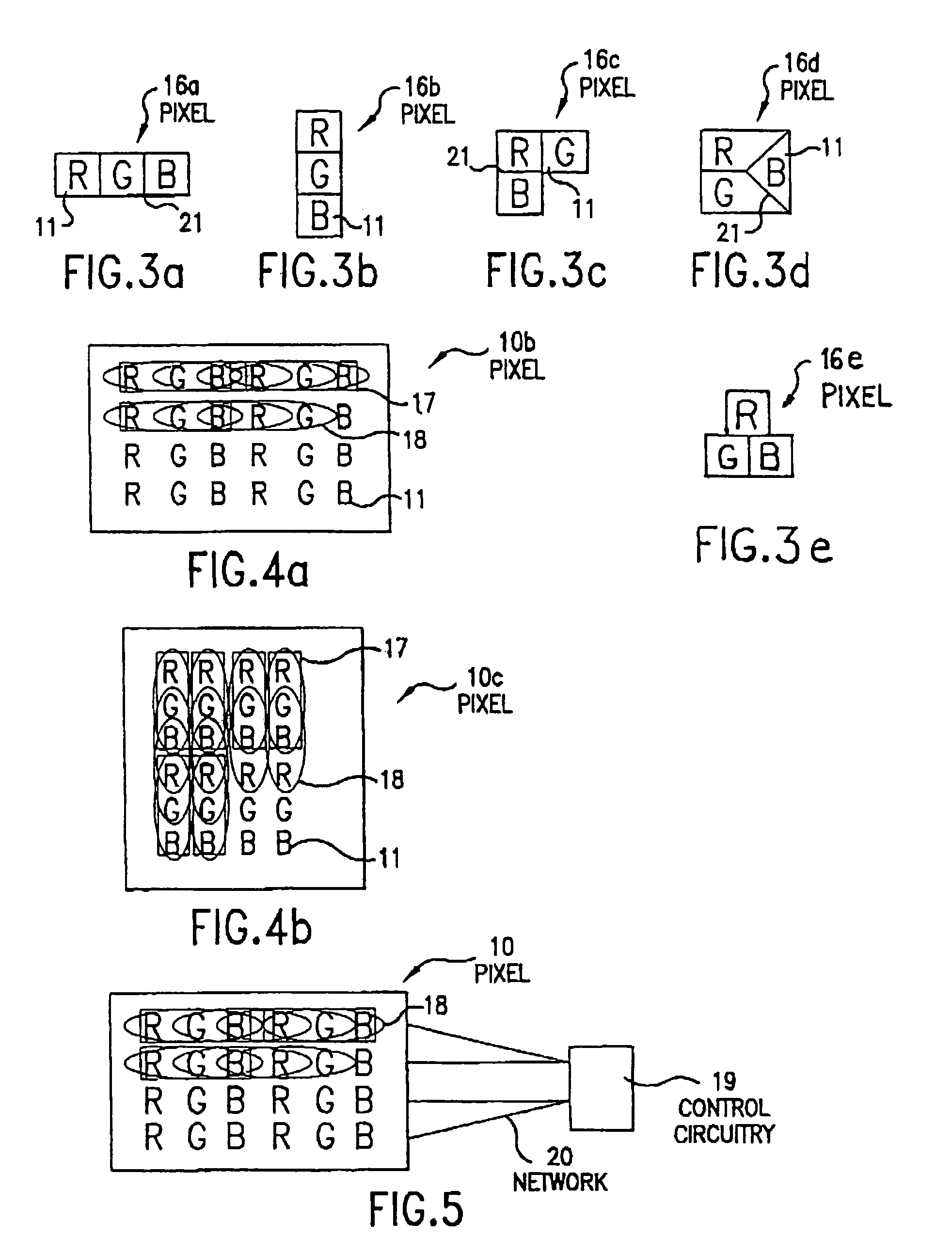Dynamic pixel resolution, brightness and contrast for displays using spatial elements
a dynamic pixel and spatial element technology, applied in the field of display, can solve the problems of limiting the resolution and picture sharpness, prone to large amounts of rejects, and high cost of integration of a large number of thin film transistors (tft) to achieve the effect of improving resolution
- Summary
- Abstract
- Description
- Claims
- Application Information
AI Technical Summary
Benefits of technology
Problems solved by technology
Method used
Image
Examples
Embodiment Construction
[0046]As shown in FIGS. 1a to 1c, pixels 12a, 12b and 12c have a square shape. Pixels 12a, 12b and 12c comprise regularly disposed dots 11 radiating the basic colours red (red dot 13), green (green dot 14) and blue (blue dot 15).
[0047]In FIGS. 1b and 1c, we observe different dots arrangement in a quad pixel. Preferably, each dot 11 is surrounded by a black mask or black barrier ribs 21 to obtain a higher contrast between the dynamic pixels 18. The precise arrangement of the various colour dots 13, 14, 15 is not critical; care should be taken, however, that the arrangement of the different dots 13, 14, and 15 should be identical in each static pixel 17 within a display 10.
[0048]FIGS. 2a and 2b show displays 10 and 10a having square static pixels 17. Static pixel 17 corresponds to a well known grid pattern or raster of display 10 or 10a. The dynamic pixels 18 shown in a circular form represent the inventive configuration of display 10 or 10a. Each dynamic pixel 18 comprises three dots...
PUM
 Login to View More
Login to View More Abstract
Description
Claims
Application Information
 Login to View More
Login to View More - R&D
- Intellectual Property
- Life Sciences
- Materials
- Tech Scout
- Unparalleled Data Quality
- Higher Quality Content
- 60% Fewer Hallucinations
Browse by: Latest US Patents, China's latest patents, Technical Efficacy Thesaurus, Application Domain, Technology Topic, Popular Technical Reports.
© 2025 PatSnap. All rights reserved.Legal|Privacy policy|Modern Slavery Act Transparency Statement|Sitemap|About US| Contact US: help@patsnap.com



